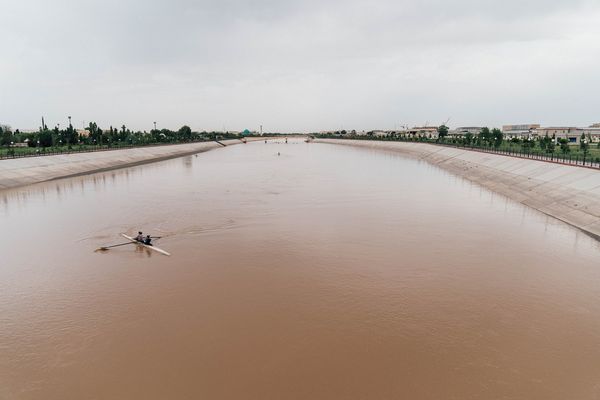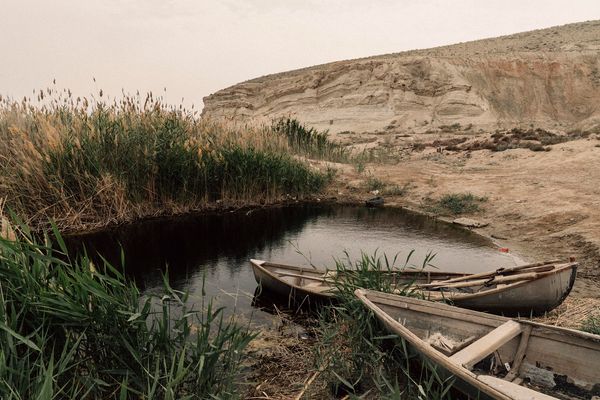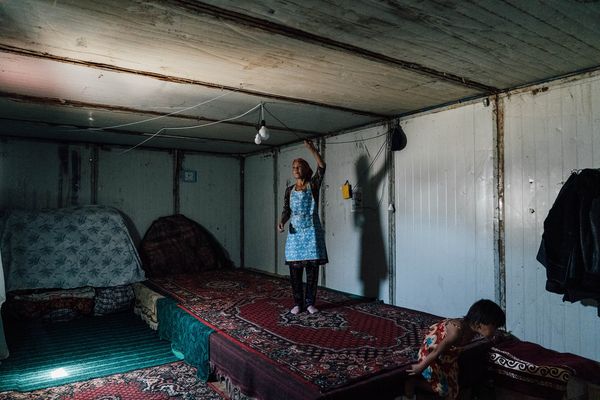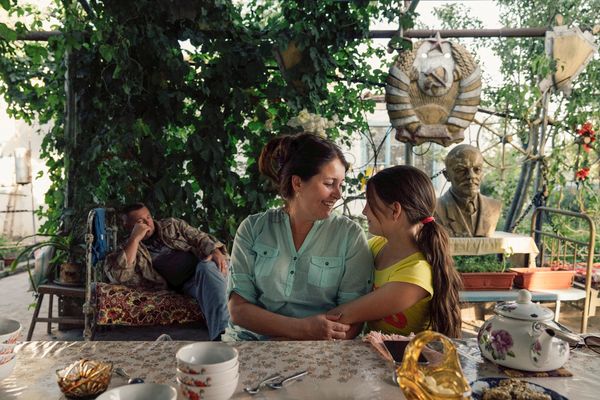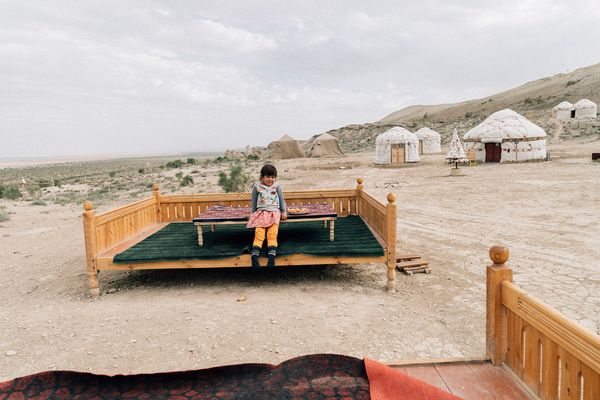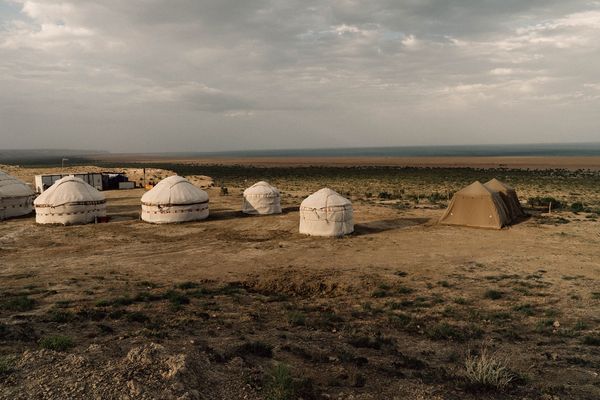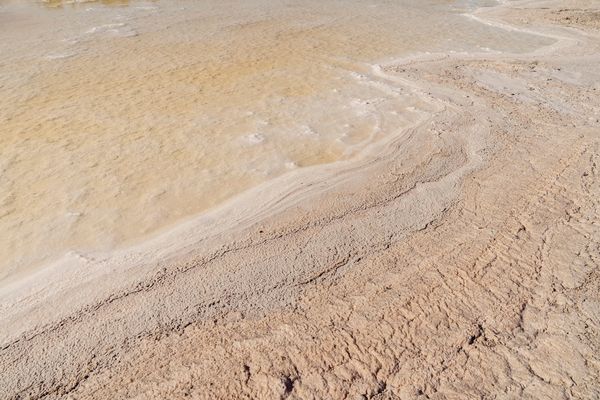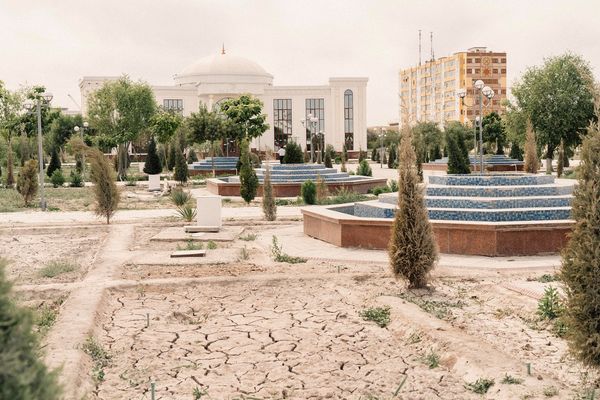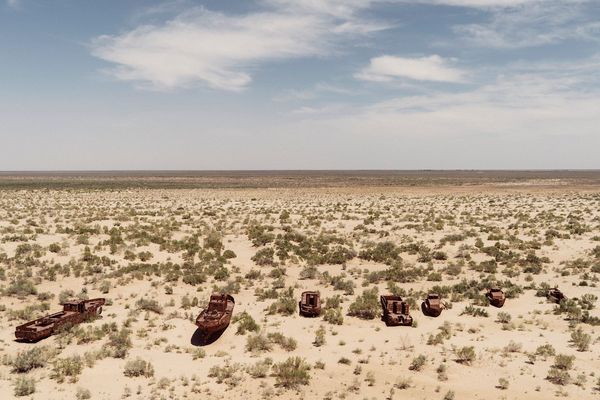sweet salt of emptiness
-
Dates2018 - Ongoing
-
Author
The project “In the desert of the Aral Sea” is dedicated to the ecological disaster of the Aral Sea, the dehydration of which has a great impact on the daily life and culture of people in this region. The Aral Sea lies on the territory between Kazakhstan and the Autonomous Republic of Karakalpakstan, which is part of Uzbekistan.
According to the European Radio Liberty, a three-day storm struck the Karakalpakstan and Khorezm regions of Uzbekistan, which began on May 26, 2018. Salt, the dried-up parts of the Aral Sea, covered with a white layer farm fields and fruit trees, which destroyed many agricultures not only in Muinak which is 100 km from the Aral Sea, Nukus also covered the capital of Karakalpakstan which is 300 km from the current Aral Sea . The storm also led to the cancellation of flights at the airport of Urgench, created a danger on the roads and caused breathing difficulties for many people. The storm reached a speed of more than 72 km / h. Temirbek Bobo, 80 years old, told the Uzbek service of Radio Liberty that he had encountered such a heavy storm for the first time.
“I saw the wind bringing sand before, but it was the first time I saw salt dripping from the sky. This event can be called a disaster, ”said Bobo, who lives in the Takhiatash district of Karakalpakstan. "All day, except for the salty rain, nothing was visible, not even the sun." He added: “Nature has begun to avenge us for what we have done with the Aral Sea.”
In Soviet times, all countries had to fulfill an economic plan. Uzbekistan had to grow cotton in very large quantities. For irrigation of fields, the water of the Amudarya and Syrdarya rivers, which flowed into the Aral Sea, was used. Less and less water reached the Aral Sea. It began to dehydrate, which also caused other problems. Drying in the desert turned over 100 degrees, there was no drinking water left. All fish factories were closed. while in 1960, fishing reached 40,000 tons, in the mid-80s only 2 tons. Local fisheries simply ceased to exist and more than 60,000 jobs were lost. The most common type of fish was Black Sea flounder, in the 1970s it was adapted to life in salt water and therefore was introduced here. But in 2003 she disappeared from the Aral Sea. Many fishermen were left without work. People were forced to leave their homes and look for a new place of residence in order to find a job and manage to feed their families. Today there is not a single species of fish in the sea, only Artemy plankton. Pesticides used for irrigation of fields got into the groundwater.
Since the 1970s, the number of gastrointestinal diseases has increased dramatically. This spreads typhoid, paratyphoid, hepatitis and multidrug-resistant tuberculosis (Doctors without borders). Infant mortality is 24.1 deaths per 1000 people before the first year of life (WTO). So this contributes to the low level of quality of breast milk.
Once upon a time on the Aral Sea coast, the surf was noisy, and seagulls were heard.
Sitting on the shore, you could watch the ships coming and going. Then the people did not know that they would make an irreparable mistake. Today, the coast has become hundreds of kilometers away, turning the seabed into the salty desert of Aralkum, strewn with white shells, resembling a bygone sea. This story is not only about the disappearance of the Aral Sea, but also about people whose lives are being tested every day and are being depleted even today.
Empty sandy depleted soil - a metaphor. It is a reflection of the state of the human soul of the entire population of the region, which has lost not only its culture, but also the source of life - water. Salt reminds us of the unquenchable pain and repentance. All that remains, looking at these spaces, is the memories and hope that the new generation will be able to change something for the better. I suggest you walk with me along the bottom of the Aral Sea to feel the atmosphere of emptiness, salt in the air and the sufferings of nature.
